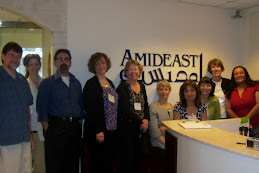June 1, 2010. Reflections on United Arab Emirates.
Gentle Readers:
Please forgive me for my lack of entries heretofore. The Fulbright Hays program keeps our group very busy. We have planned meetings and excursions all day, nearly every day, plus many of our evenings as well. There is very little time for reflection, reading and writing. But I will try to do some writing today.
After spending approximately 10 days in the United Arab Emirates, my scholarly, informed, culturally sensitive conclusion is that it weird and wonderful. (“Weird” is a scholarly term meaning “of strange or extraordinary character. “Wonderful” is another term used by the highly educated to mean “exciting wonder : MARVELOUS, ASTONISHING.”)
One aspect of the weirdness is the multicultural nature of this country. There are over 200 nationalities who live and work in the UAE. Americans are used to multiculturalism, but this is of a different variety. Only about 15% of the inhabitants are this country are nationals, meaning the original Emirati inhabitants of this country. They are also the only ones, by and large, who are citizens. The others will for the most part never become citizens and are here only on a temporary, contract basis. Even those who have lived here for 20, 30, 40 years will never be citizens and are required to leave the country at age 60.
Approximately 50% of the expatriate workers are Indians. Another large percentage are Arabs from other countries (Egyptians, Lebanese, Palestinians, Jordans, etc.) There is a significant population of Europeans and Americans as well. Although there are not many overt conflicts between the groups, there is a definite pecking order. Emiratis are at the top of the hierarchy. Next are Westerners (Europeans and Americans). Next come the Arabs, then come the educated Indians, followed by the uneducated Southeast Asians.
Expats work in all sorts of occupations. A very large percentage (maybe 30%) are those with little education and low income: construction workers (men) and domestic workers (women). They come on three year contracts and are extremely vulnerable. Many others, though, are professionals working in business, IT, and other professions.
Walking down the street, a befuddled tourist could be forgiven for thinking he or she has landed in Indian or Pakistan, except that all signs are in English and Arabic. In fact, English is spoken here more frequently than is Arabic. Most people who work in the stores and other service industries may not speak Arabic, but they will almost certainly speak English. This is convenient for American tourists, but is worrisome for Emiratis who are concerned (understandably) that they are losing their country to foreigners.
The Emiratis tend to stand out on the streets (and in the malls) because they usually wear their national costume: the long white robe ( kandoura ) and white head cloth ( ghutrah ) with a black rope ( aqal ). The women wear long black robes called abayas and black head coverings called shaylas.
Non-Muslim Westerners tend to think that women who are veiled do so under duress. This is not the case here. Women are not required to cover their heads. Most of them choose to do so, but not all. Those who cover their heads do it either out of religiously-inspired modesty or more simply as a symbol of national identity.
Non-Emiratis usually wear standard Western clothing, although Indian/Pakistani traditional national clothing is also commonly seen. Non-Muslim visitors are not expected to wear robes or scarves. However, we are expected to dress modestly. We were told that women should wear pants or skirts that go below the knee and to avoid sleeveless tops. Long-sleeved tops are preferable. However, this is not Iran, Afghanistan or Saudi Arabia, and there are no “morality police” to enforce dress codes. Modest dress is simply preferable in order to be respectful of local sensitivities.
Tuesday, June 1, 2010
Subscribe to:
Post Comments (Atom)

No comments:
Post a Comment